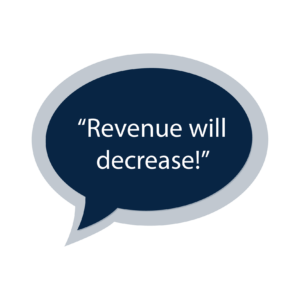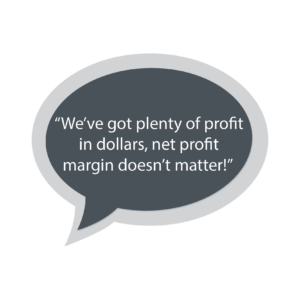Wage inflation is alive and well. You have identified a need to raise prices, and you have decided that it is the best time to do so for your company. What can you do to ensure that the price increase is a success?
The first step is to determine your new pricing. Some companies raise prices equally on all products or services. Other companies vary the level of price increases. There are many options and no right answer for every company.
At this point, it is often helpful to incorporate profitability analysis of all products and services offered by your company. Most businesses have a portfolio of products and services with varying gross and net profit margins. The tactics of performing this analysis are beyond the scope of this blog post.
Regardless of the exact details of the price increase, it is vital to lead with clear and reliable communication, with both employees and customers.
Communicating Value To Your Team
Remember that most employees have a poor understanding of the importance of profit to a company’s long-term health (and their continued employment). I like to anticipate objections, provide a forum for their discussion, and attempt to persuade the objectors regarding the merits and need for a price increase.
Let’s examine three common objections here.

“If we raise prices, our revenue will decrease.”
When companies consider price increases, I find that many executives fear lost revenue. In effect, they remain frozen in terror. Encourage them to identify the basis of those feelings so that you can deal with the facts, not fear.

“If we keep prices low, we will get more revenue – essentially grow our share of the market. As we grow revenue, we will not have to add much additional overhead so our net profit margin will not decrease.”
For most businesses, if revenue doubles, overhead will double. Therefore, if costs are increasing, the net profit margin will go down – even if you grow.

“We will still have plenty of profits in dollar terms; net profit margin (the percentage – pre-tax net income divided by revenue) does not matter.”
Think of the net profit margin is a measure of the “shock” that a business can endure and still survive. The higher the percentage, the greater the shock the company can absorb. Shocks include the loss of key customers, loss of critical employees, economic recessions, supply chain problems, along with a host of other issues.

Getting The Team On Board
At the end of this internal communication process, you want your marketing, sales and customer service people to believe in the price increase. Further, you may want to use your pricing strategy to accomplish other important goals.
For example, you may want to direct customers to behave in a way that is better for you (and hopefully for them). Many supplier/customer relationships get into habits of interaction that are not efficient for either entity. You can use your new pricing strategy to incentivize the optimal behavior.
I have one client who created a website portal to obtain a price quote and to place an order for a “made to order” product. Despite offering discounts to use the web portal, many customers failed to develop a new habit of using the site.
This client chose to increase pricing across the board and told the customers who were not using the portal that they could, in effect, avoid the price increase by using the website. Increased use of the portal saved this client significant overhead costs.
In the end, make sure that your pricing changes, net of any provided discounts, will maintain or increase your net profit margin.

Communicating Value To Customers
When increasing prices, excellent customer communication starts with crafting the narrative explaining and justifying the change.
The price increase communication offers an opportunity to create a narrative to remind your audience of the value that the company produces for its customers. The benefits are often more than what is evident to company employees.
For example, in the landscape maintenance industry, many landscape companies sell 42 maintenance visits per year at a price of $X per visit. It is straightforward, presented with maintenance as the objective.
Another way to frame that service would be to sell a complete landscape service package that preserves and enhances not only the customer’s investment in the landscape but also the value of the home or commercial building. In providing that service, the company implements processes to identify and communicate any issues before they can decrease the value of the customer’s investment. In other words, this company thinks about the customer’s landscape so that the customer does not have to think about it; the customer can enjoy it, care-free.
This latter framing has far greater perceived value than 42 visits for most customers. To be clear, the actual number of visits for each of the two packages would likely be the same.
In many cases, the narrative should include an explanation of cost increases. The more that you can connect costs increases to stories in the media, the more rational the cost increases will appear. The media stories add credibility to the basis for the cost increases.
Communicating the real value of a product or service to customers is essential for ensuring that price increases go smoothly. There will always be those few customers who fail to see the value, but those who do will remain loyal to your business despite changes in price.
I am curious as to what tactics you have used to implement price increases. What has worked well and what has not? You can always reach out to me via email.

